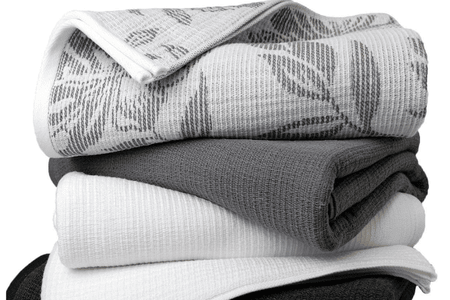Indonesia need to increase focus on its TPT industry
YarnsandFibers News Bureau 2014-07-02 16:15:00 – JakartaThe textile and textile products (TPT) industry is one of the important manufacturing sectors in Indonesia, with gross domestic product (GDP) valued at Rp 172.4 billion (US$14.4 billion) in 2013. Currently, the TPT industry continues to encounter many challenges and uncertainties, based on that the Indonesian Textile Association (API) has estimated that Indonesian TPT exports will reach $12.9 billion in 2014 which is lower than the previous projection, which was $13.3 billion.
The TPT industry is also a quite significant labor-absorbing industry. According to Central Statistics Agency (BPS) data, workers absorbed by the industry from micro to large scale in 2012 were 2.9 million people, or 21.7 percent of the total labor absorption of non-oil and gas manufacturing industries.
The performance of the TPT industry will be greatly affected by global economic conditions, especially in the US and Europe as the largest Indonesian TPT export markets.
The potential recovery of the US economy as the largest Indonesian TPT export market will give rise to optimism, although the impact is not expected to be directly significant this year. Indonesian export products still have to compete with products from competitors, such as Vietnam and Bangladesh, to compete for improved opportunities in the US market.
The Indonesian TPT export market share in the key markets of the US and Europe is relatively small, and even tends to decrease. In the US market, Indonesian TPT export market share in 2013 was 3.7 percent, lower than in 2009 at 4.9 percent, while in the European market it was 0.8 percent, down from 1 percent in 2009.
While the potential recovery of the US economy gives some opportunities for the Indonesian TPT export market, increases in electricity rates, wages and the rupiah’s depreciation have added to cost pressure.
The increase in the minimum wage will have a more influential impact on the downstream TPT industry (labor costs of garment industry reached 27 percent, higher than those of fiber or spinning industry at 6 percent), while electricity rate increases will affect the upstream TPT industry (energy costs of fiber making industry was up to 25 percent, higher than the garment industry at about 1 percent).
In April 2014, the government gradually started removing the electricity subsidy for publically listed medium industrial customers (I-3) and large industrial customers (I-4).
In regard to this, the Indonesian Textile Association (API) stated that 48 TPT companies had been directly affected by the industrial electricity rate increases, consisting of 12 companies in the I-4 category and 36 companies in the I-3 category.
According to the API, the electricity rate increases have the potential to increase terminations of employment, decrease production by up to 20 percent and lead to rising prices of finished TPT products ranging from 7 to 10 percent.
Moreover, rupiah fluctuations have put additional pressure on the TPT industry. Currently, the main raw material (cotton) is largely imported (99.5 percent). In addition to that, auxiliary materials (dyes and other chemical substances) for the TPT industry, even though purchased locally, are still widely traded in US dollars.
To keep the performance of TPT exports at an optimal level, Indonesia needs to focus on products that have a more competitive advantage than in other countries. This can be arrived at using the Revealed Comparative Advantage (RCA) method for HS codes 50-63 in three major export markets of Indonesian TPT over the last three years.
The top 10 TPT commodities indicated by RCA with the highest competitiveness in the US market include yarn, women’s clothes, babies’ clothes, men’s clothes, woven fabrics of cotton and other fibers.
Second, the top 10 TPT commodities with the highest competitiveness in the European market include yarn, woven fabrics, men’s overcoats and gloves. Third, the top 10 TPT commodities with the highest competitiveness in the Japanese market include woven fabrics and yarn.
However, the TPT industry is required to be more observant in determining which textile commodities have good prospects and a high competitiveness.
Indonesian TPT exports were dominated by garments, such as shirts, T-shirts, dresses and skirts at 60.9 percent, while the remaining 39.1 percent belonged to textiles, such as fibers and yarns.
Market Intelligence
Ask for free sample Report

experience
Customer Base
dedicated team
Countries Served Worldwide









